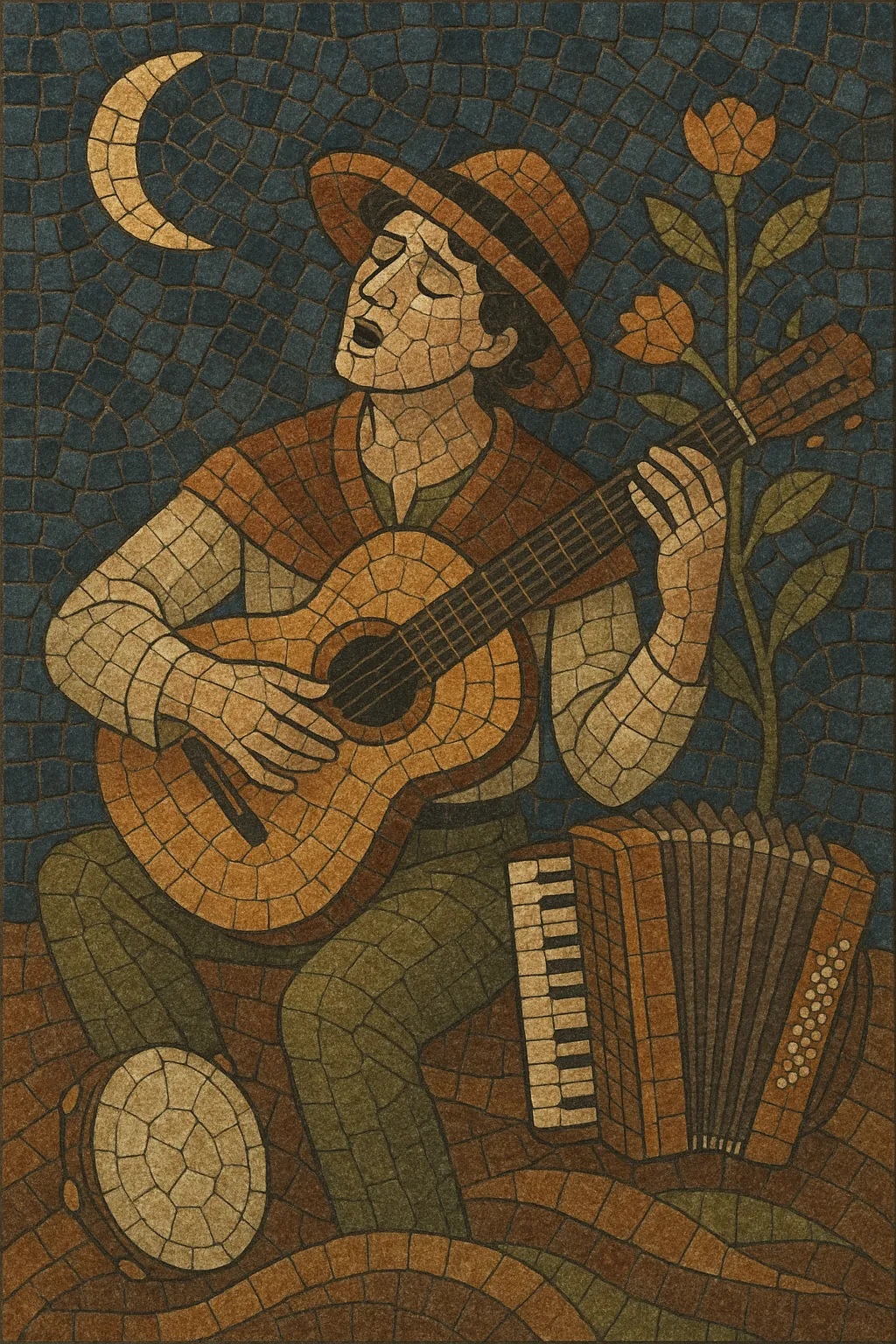Stornello is a central-Italian improvised folk song and poetic form, most associated with Tuscany and Lazio (Rome). It typically consists of a brief stanza—often three lines—with tight rhyme and a witty turn, sung over simple, lilting accompaniment.
In performance, stornelli can be playful or teasing (a dispetto), amorous and tender (as in serenades), or satirical and topical. Singers often open with a formulaic “Fiore di…” (“Flower of…”) line, build a metaphor, and then deliver a clever punchline. The music is usually in a diatonic major key or natural minor, in an accessible range, and supported by guitar, accordion/organetto, and hand percussion.
Stornello emerged as a vernacular song-poetry practice in central Italy, crystallizing in the 19th century as an improvised, epigrammatic stanza sung at social gatherings, countryside festivities, and serenades. Its hallmark is brevity, wit, and rhyme—often delivered in local dialect (Tuscan or Romanesco) and framed by stock openings like “Fiore di…”.
During the 1800s, urbanization and the rise of print culture helped codify the form in songbooks and broadsides. The catchy, memorable structure made it a favorite for buskers and street singers. Composers and salon musicians took notice: the stornello’s pithy, folk-derived style was adapted for voice-and-piano songs, and occasionally referenced in operatic contexts by figures such as Giuseppe Verdi and Francesco Paolo Tosti.
With radio and early recording, Roman and Tuscan stornelli became popular beyond their regions. Post–World War II, Italy’s folk revival (with fieldwork, anthologies, and festivals) preserved and re-energized stornello traditions. Artists and ensembles from Rome and Florence kept the idiom alive on stage and record, balancing humor, dialect, and social commentary.
Today, stornello thrives as living folklore—at trattorie, local festivals, and on the street—while also informing Italian folk-revival concerts and singer‑songwriter repertoire. Performers still trade improvised verses in call-and-response fashion, and new recordings blend traditional accompaniment with modern folk and acoustic aesthetics.


